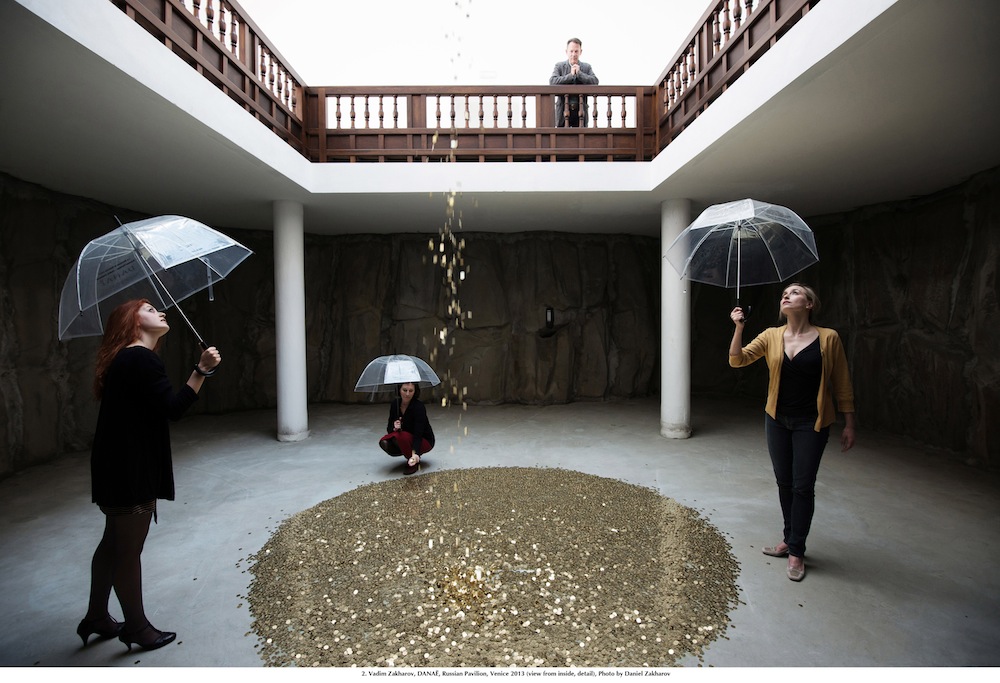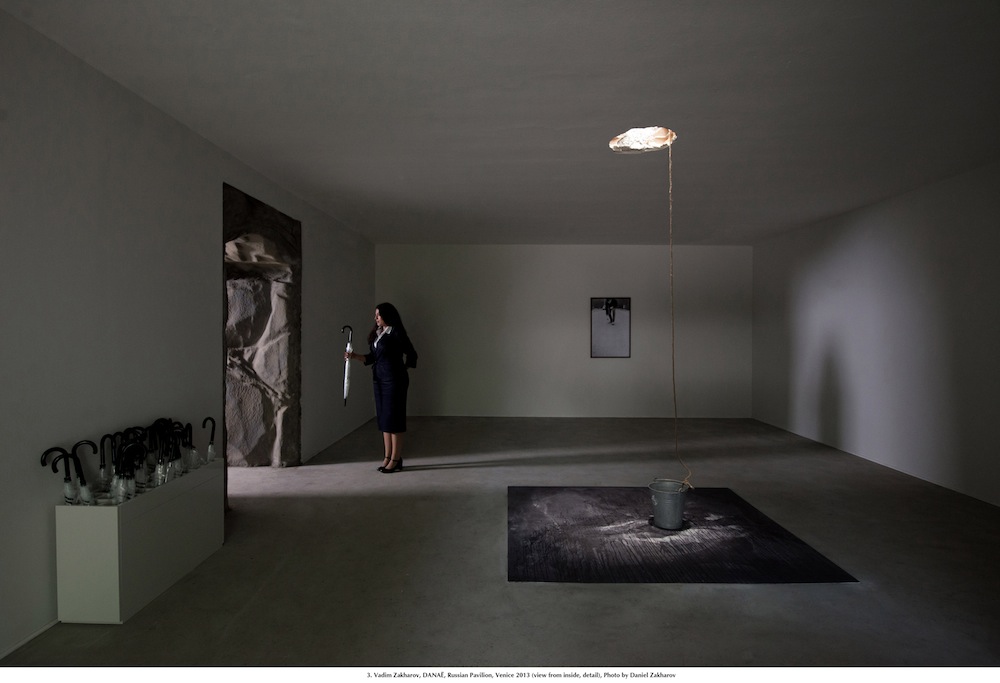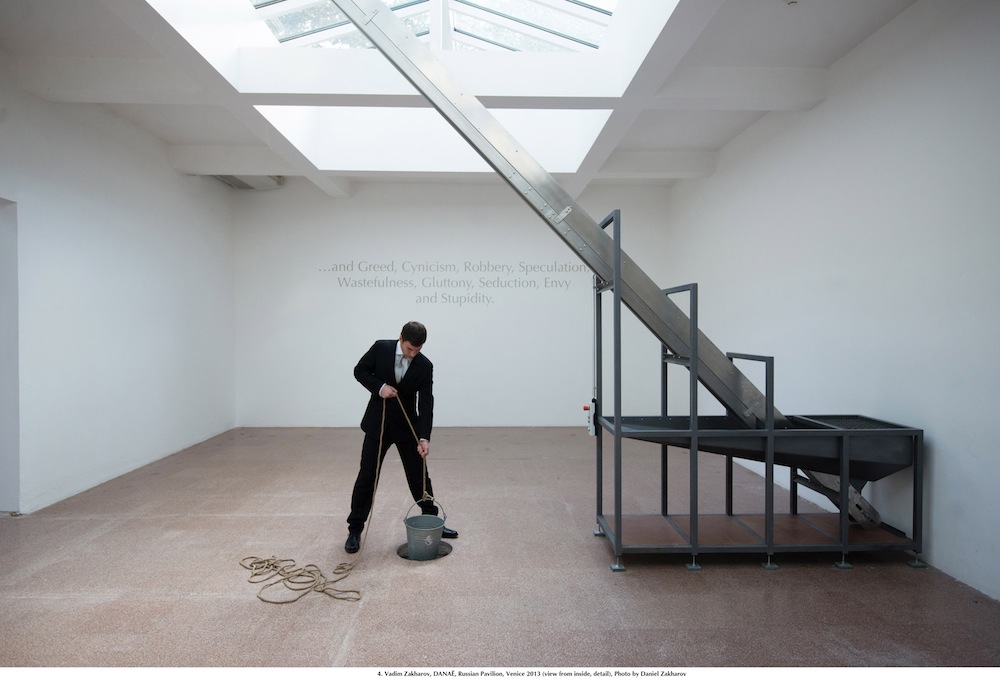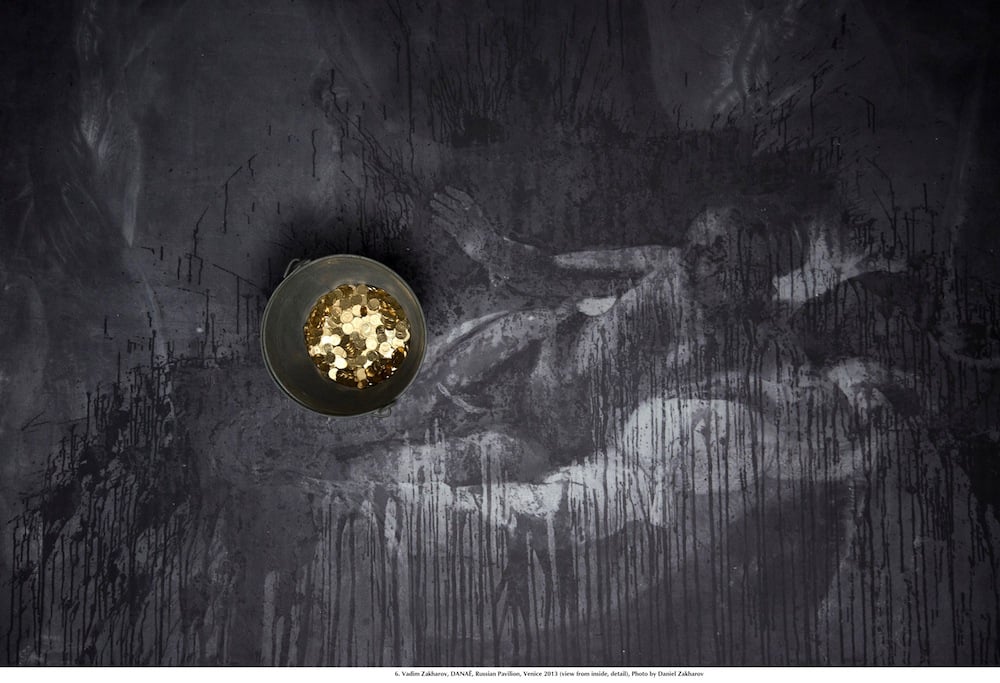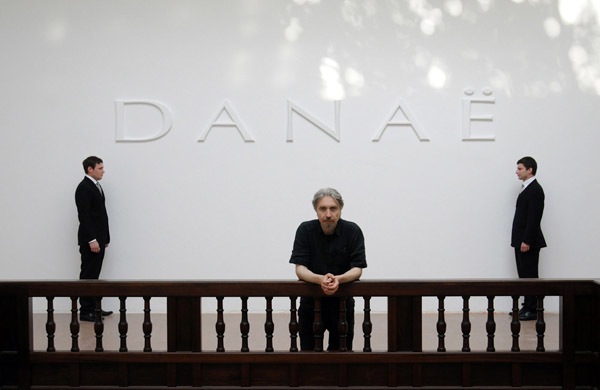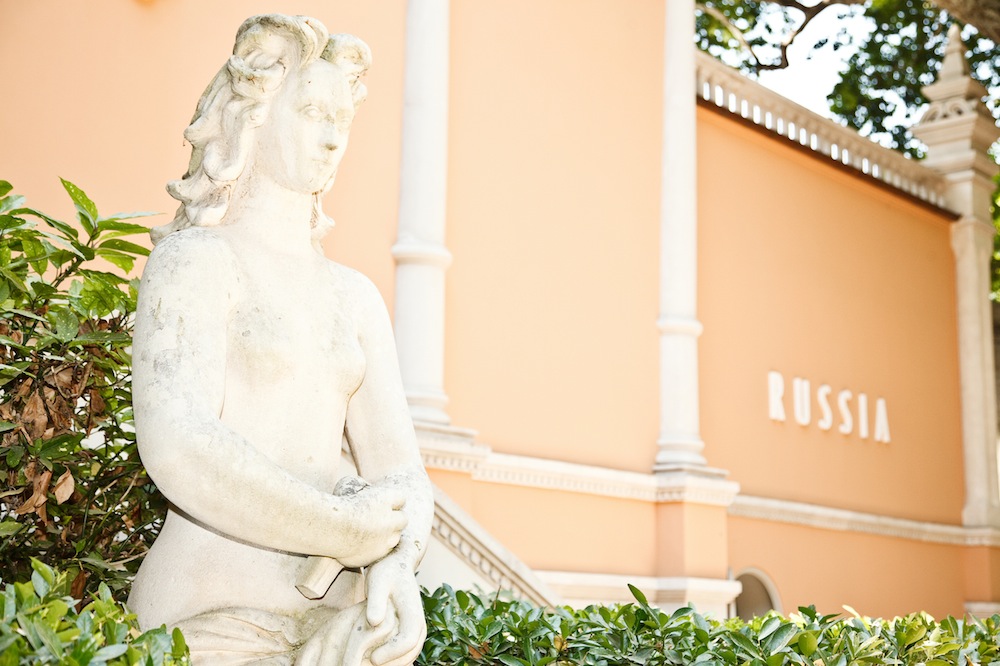Gold coins rain down on spectators at the Russian Pavilion in Venice
A ladder, a saddle, a fountain, a woman, two men, 50kg of peanuts, 2,000 umbrellas and 200,000 coins. These are just some of the components of this year’s Russian pavilion at the 55th Venice Biennale, designed by Vadim Zakharov, a leading figure in the influential Moscow Conceptual School. Spectators are segregated according to gender as soon as they enter the two-tier pavilion. Men climb to the top, giving them a vantage point from which to observe female spectators in the lower half of the pavilion, who enter with umbrellas to protect them from a shower of gold coins that rains through a hole in the ceiling.
The project draws on and is named after the Greek myth of Danaë, which has, over the centuries, inspired numerous artists including Rembrandt, Titian and Klimt. According to the myth, King Acrisius of Argos locked up his daughter Danaë in a cave to prevent her from bearing children following a prophecy that divined he would be killed by her son. Despite this, Zeus came to Danaë in the form of golden rain and impregnated her.
Zakharov’s pavilion is both a contemporary realisation of the myth but also a statement on the greed, cynicism, wastefulness and gluttony of the 21st century. Commenting on the pavilion, he said: “Kneeling and looking down, we can grasp and feel that we are present at a unique process of materialisation of the myth. Through the huge hole in the floor, we fall into another semantic and poetic space, into which golden coins fly from a pyramid ceiling … The lower hall can only be visited by women. This is not sexism but merely follows the logic of the anatomical construction of the myth. What is masculine can only fall inside from above, in the form of golden rain. The lower level of the pavilion is a ‘cave womb’, keeping tranquility, knowledge and memory intact.”
For the first time in its history, the Russian pavilion, which was built by architect Alexei Shchusev in 1914, was curated by a non-Russian, Udo Kittelmann, director of the National Gallery in Berlin. On the theme of the pavilion, Kittelmann said: “The Greek myth of the impregnation of Danae is subjected to numerous readings: a falling shower of gold makes reference to the seduction of Danaë as an allegory for human desire and greed, but also to the corrupting influence of money.”
Zakharov, a leading historian of avant-garde Russian art, was a founding member of the group of “unofficial” artists working during the latter half of the Soviet era, who were better known as The Moscow Conceptual School. He is the winner of two of Russia’s biggest art prizes, the Innovation and the Kandinsky, and previously showed at Venice in 2002, at the Arsenal.
